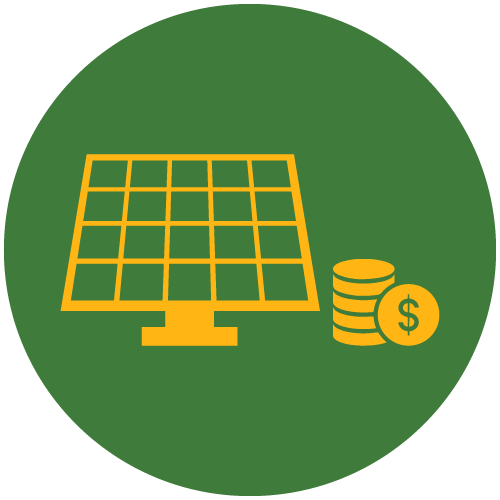In a stroke of very good news for solar power in the Sunshine State, the Queensland Competition Authority (QCA) has announced that the solar feed-in tariff available to solar system owners in regional parts of the state will apply for systems up to 30 kilowatts (30kW) in capacity. Until the QCA’s decision, the limit was 5kW.
 The implications of this rule change are significant for both residential & commercial solar system owners as well as the solar industry as a whole. The expansion is part of Queensland’s current Labor government’s efforts to make the state live up to its nickname to the fullest extent possible.
The implications of this rule change are significant for both residential & commercial solar system owners as well as the solar industry as a whole. The expansion is part of Queensland’s current Labor government’s efforts to make the state live up to its nickname to the fullest extent possible.
The QCA has also announced that they will be introducing a ‘Time-varying Feed-in Tariff’ (T-FiT) which pays solar system owners a premium for energy that they send into the grid during peak times – and a lower rate for other times.
Compare Solar & Battery Quotes
What does it mean for going solar in regional Queensland?
The solar feed-in rate available in regional Queensland – set annually by the QCA – sits at 10.1c per kilowatt-hour (10.1c/kWh) for the 2017/2018 financial year. Specifically, it applies to customers on the Ergon Energy network and some customers connected to the Essential Energy network (contact the relevant network directly to find out more).
n.b. Customers on Queensland’s legacy Solar Bonus Feed-in rate of 44c/kWh will continue to receive this rate until 2028 or until they move house.
This 10c rate is comparable to what is currently on offer through most of the rest of Australia, including the southeastern part of Queensland (including Brisbane), which is serviced primarily by the Energex network.
Larger system owners can now tap feed-in benefits
The main way that solar panels allow homes & businesses with solar panels save money these days is by ‘self-consuming’ the solar energy that they produce. For each unit of solar energy that they put to good use directly, they avoid having to purchase a unit of expensive grid electricity – thus saving them about 25-30c/kWh.
These days, solar feed-in tariffs are mainly a secondary benefit of having solar; it offers some value for the solar energy that homes & businesses are unable to consume themselves. Although solar system owners would be better off self-consuming 100% of their solar energy, in practice this isn’t always possible; the feed-in rate acts as a sort of financial buffer, allowing them to receive at least some compensation for their excess solar energy.
For homes & businesses with high rates of electricity consumption, however, a 5kW solar system may not be large enough to suit their self-consumption needs. Until recently, anyone installing a system larger than 5kW in regional Queensland would have only seen the benefits of self-consumption, with their excess solar energy potentially going to waste. The increased upper limit for FiT eligibility, however, means that owners of larger system sizes (up to 30kW) may now also reap the secondary benefit of feed-in tariff revenues as well.
An announcement about the details of the T-FiT is pending.
A rough example
A customer on the Ergon network with a 10kW solar system, with an average daily consumption of 35kWh and a solar self-consumption rate of 60% would have saved approximately $2,700 annually thanks to their solar before the new rules (i.e. no feed-in tariff benefit).
Under the expanded feed-in tariff eligibility rules, however, the same customer would save around $3,270 per year thanks to the bill credits earned under the feed-in tariff. This works out to about 20% additional savings, and could potentially change the attractiveness of investing in solar for a home.
You can try our Solar System Payback Calculator to run some numbers yourself
Eligibility criteria:
According to the Queensland Department of Energy and Water Supply (DEWS), eligibility for the regional FiT is subject to the following conditions:
To maintain eligibility for the regional feed-in tariff rate, you have to:
- operate a solar PV system with a maximum inverter capacity not exceeding 30 kilowatts
- consume less than 100 megawatt hours (MW) of electricity a year (the average home uses approximately 6.1 megawatts a year)
- for the premises where the solar PV system is installed, be a retail customer of:
- Ergon Energy Queensland, or
- Origin Energy (only if you are connected to the Essential Energy supply network)
- have a network connection agreement in place with an electricity distributor signaling their approval to connect the PV system to the electricity grid, and be connected to the Queensland electricity grid
- have only one solar PV system receiving the feed-in tariff per premise.
Compare Solar & Battery Quotes
© 2017 Solar Choice Pty Ltd
- Solar Power Wagga Wagga, NSW – Compare outputs, returns and installers - 13 March, 2025
- Monocrystalline vs Polycrystalline Solar Panels: Busting Myths - 11 November, 2024
- Solar Hot Water System: Everything You Need to Know - 27 February, 2024

We can only dream of this in backwards WA with 7 cents feed in.